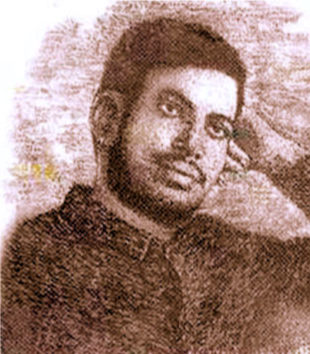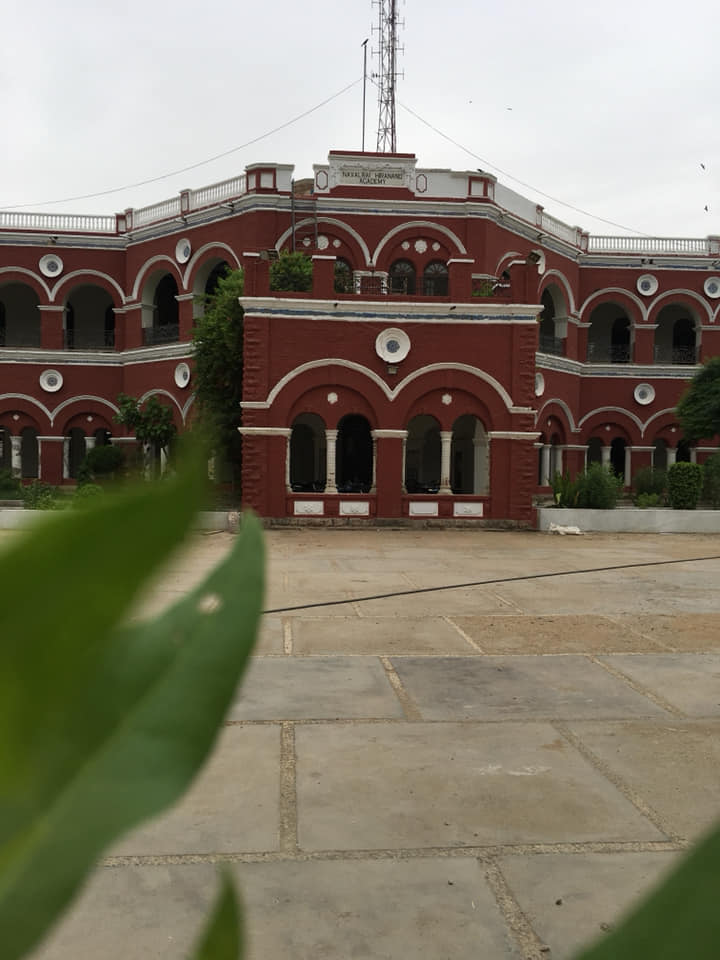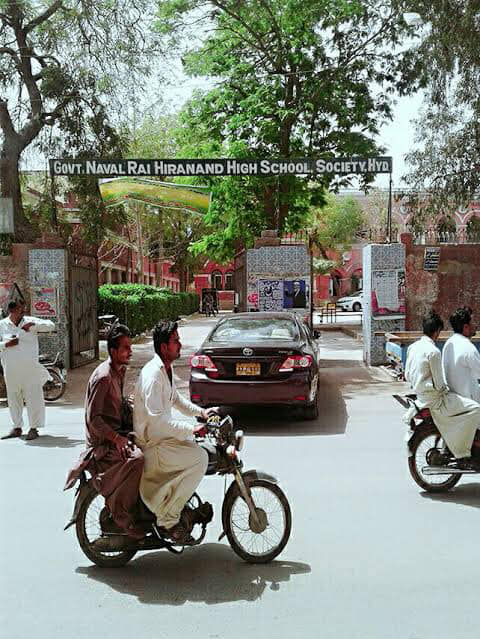
Hiranand Showkiram Advani, popularly known as Sadhu Hiranand, died of Cholera at the young age of 30 years in Bankipur India on July 14, 1893.
Sindh Courier
Hiranand Showkiram Advani, popularly known as Sadhu Hiranand, born in Hyderabad, Sindh, lived only for 30 years (1863 to 1893), but played a crucial role in bringing the fruits of reform and modernization movements of Bengal to his motherland.
Diwan Dayaram Gidumal Shahani, a noted personality from Sindh and a biographer of Hiranand, had called him ‘Sindh Ji Aatma’ or ‘Soul of Sindh’.
Diwan Dayaram writes that in the 1891 census Sikhism was introduced as a separate choice in the column of religion but, unlike Punjab, this choice was not available to those living in the Bombay Presidency. Therefore, Hiranand’s elders, Showkiram and Nandiram, had no option but to declare themselves Hindus. Diwan Shaukiram Advani, himself a reformist, had four sons – Nawalrai, Tarachand, Hiranand and Motiram.

Sindh was potentially a fertile ground for the propagation of the reform movements that originated in Bengal in early 19th century, chief among them being the Brahmo Samaj, founded by Raja Ram Mohan Roy in 1830. Hiranand’s elder brother, Nawalrai Showkiram, 15 years his senior, had already been making efforts to eradicate some of the social ills from Sindh’s Hindu community. He had been working on the same lines as was being done in Bengal by founding here the Sikh Sabha, later renamed as Sindh Sabha and finally took the shape of the Sindh’s Brahmo Samaj. He had come to know of the Brahmo Samaj in Bengal and met one of its leaders Keshab Chandra Sen in Calcutta in 1873. Nawalrai had been instrumental in building the Brahmo Nav-vidhan Mandir in Hyderabad, with a large beautiful garden in its courtyard, which was opened in September 1875 by Satendranath Tagore, son of Maharishi Devendranath Tagore, who was the Sessions judge in Hyderabad in those days.
Hiranand, born on March 23, 1863, first studied at the Maktab of Akhund Wali Muhammad and learnt Sindhi and Persian. Then he went to the Normal Practicing School in Hyderabad (Which later was turned into Teachers Training College), and later, in 1880, was sent by his brother Nawalrai to Calcutta where he remained for four years and did his matriculation and graduated from the Presidency College. Hiranand was first Sindhi who did matriculation and graduation from Calcutta. Initially he stayed with Keshab Chandra Sen as a member of his family, and had the opportunity to meet and get influenced by people such as Ram Krishan Paramhans and make many friends.

On returning to Sindh in 1884, Hiranand started editing two newspapers: Sindh Sudhar (Sindhi) and Sindh Times (English) from Karachi. But he soon found out that he would rather work in the field of social reform, so he came back to Hyderabad where in 1888 he and Nawalrai founded the Union Academy for modern education. They opened the first girls’ school in Hyderabad where on their request two Ghosh sisters came from Lucknow to teach. However, Hiranand continued to work in journalism as well and edited Saraswati and Sudhar Patrika — the two periodicals launched by the Hindu Social Reform Association, Hyderabad, around 1890. Sadhu Nawalrai was the editor of ‘Sudhar Patrika’ magazine. The literary Sindhi language magazine “Sarsoti” was the first magazine which was popular among Hindu as well as Muslim community of Sindh. Both the magazines also published the write ups of women. Being editor of this magazine, Sadhu Hiranand regularly contributed essays, stories and literary articles in almost every issue of the magazine. Renowned scholar Bherumal Meharchand Advani compiled a book ‘Hire Joon Kahaniyoon’ (Diamond Nuggets) in 1926 that containing selected writings of Hiranand published in various issues of this magazine. Diwan Dayaram Gidumal Shahani, who was a judge at that time, used to write for the magazines and newspapers of Sadhu Hiranand with a fake name.
His other social work included the establishment of a center for the treatment of leprosy at Manghopir, Karachi, and an orphanage in Shikarpur. Female education was very close to Hiranand’s heart, so he wanted his own daughters, Lakshmi and Rami, to get the best education available at that time in India. He took them in 1893 to Bankipur to admit them to Prakash Chandra Roy’s Aghor Kamini Girls’ School. The three of them, accompanied by his friend Promotho Lal Sen, or P.L. Sen the priest, went through Sukkur, Lahore and Lucknow to arrive in Bankipur, where, unfortunately, Hiranand fell ill with cholera and died on July 14, 1893. His elder brother, Nawalrai, passed away four months later. Union Academy was renamed Nawalrai Hiranand (NH) Academy after them. Sadhu Hiranand was the Principal of this school where they also taught ethics and Sanskrit language.
 Sadhu Hiranand, who married at the age of 16, was opposed to tradition of early marriages and had launched campaign against it and wrote several articles to create awareness. He and his brother also struggled against other social evils like consumption of alcohol and gambling. In 1892, when the cholera broke out in Hyderabad, the Sadhu brothers worked day and night to save the people. Sadhu Hiranand wanted to continue medical study after graduation but could not accomplish his desire. He wanted to provide free health care services to the people and for that he was in touch with Hyderabad’s Civil Surgeon Dr. Home Stead who extended great support to him. After retirement, Dr. Home Stead left for UK but Sadhu Hiranand remained in touch with him. A Sindhi lady doctor had later built a building near Pacca Qila and named it as ‘Home Stead Hall’.
Sadhu Hiranand, who married at the age of 16, was opposed to tradition of early marriages and had launched campaign against it and wrote several articles to create awareness. He and his brother also struggled against other social evils like consumption of alcohol and gambling. In 1892, when the cholera broke out in Hyderabad, the Sadhu brothers worked day and night to save the people. Sadhu Hiranand wanted to continue medical study after graduation but could not accomplish his desire. He wanted to provide free health care services to the people and for that he was in touch with Hyderabad’s Civil Surgeon Dr. Home Stead who extended great support to him. After retirement, Dr. Home Stead left for UK but Sadhu Hiranand remained in touch with him. A Sindhi lady doctor had later built a building near Pacca Qila and named it as ‘Home Stead Hall’.
Sadhu Hiranand worked for welfare of widowed women. He also arranged education of Shrimati Chatur Bai, the aunt of Mangharam, as she was visually impaired. He arrange Braille system for Chatur Bai who learnt English and became able to read classical English literature.
According to the website of the Indian Institute of Sindhology the honor of this name was kept alive when 104 years later, in 1992, an institute was established under the name Sadhu Hiranand Nawalrai Academy at Adipur-Gandhidham in the Kutch area of the Indian state of Gujarat. Several other projects and institutions have been named after Sadhu Hiranand in different cities of India.
Valiram Vallabh, a renowned Sindhi scholar, writer and translator, originally from the desert district of Thar and based in Hyderabad, says that the Brahmo Nav-vidhan Mandir, where the Samadhis of Hiranand and Nawalrai were built in 1893, was declared evacuee property after partition and was allotted to a refugee colonel. During the 1970s, the structure was demolished and replaced with a multi-story building, Husain Square by name, which had a market, called Liberty Market, at the ground floor and flats on the three floors above that.
The NH Academy’s building at Risala Road now houses the Government High School No.1, Fatima Girls’ High School and Sindh Law College. In Karachi, a street in Soldier Bazaar area was named after Sadhu Hiranand before partition while the leprosy hospital in Manghopir area still exists.
________________
Source: Encyclopedia of Indian Literature, People Pill, Wikipedia, Encyclopedia Sindhiana, Dawn and other websites